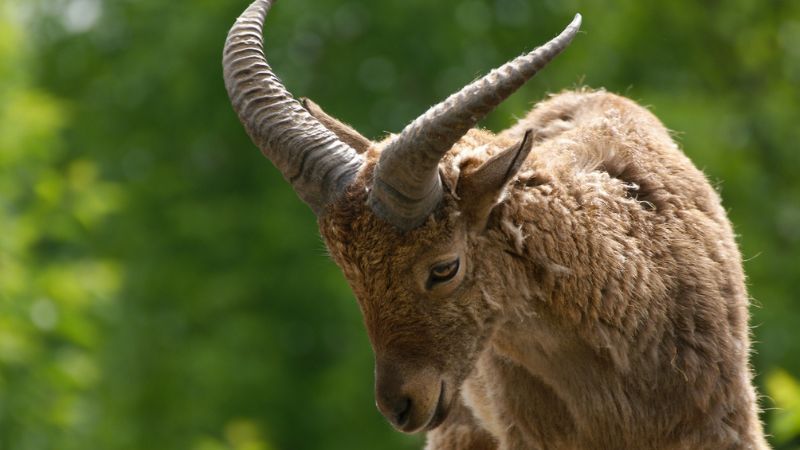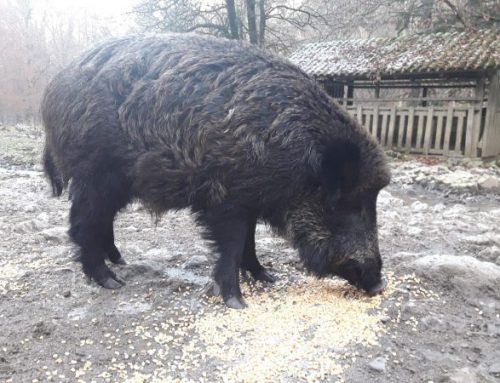In the heart of the Greater Caucasus, where snow-capped peaks rise like eternal bastions against the sky, nature reveals itself in its rawest and most unspoiled form: it is here that the thrilling experience of Tur hunting comes to life.
In these remote valleys, touched only by the wind and the watchful eyes of eagles, lives one of the most enigmatic and fascinating creatures of the Eurasian wildlife panorama: the Eastern Tur. Few animals embody the wild essence of the mountains as much as this ungulate, a symbol of resilience, beauty, and adaptation. And few hunting experiences can match the physical and emotional intensity of pursuing the Tur across the rugged Caucasian ridges.
The Eastern Tur: Profile of an Ancient Alpine Creature
The Eastern Tur (Capra cylindricornis) is a wild goat endemic to the eastern Caucasus, particularly in Georgia, Azerbaijan, and some border areas of Russia. It is a robust species, extraordinarily well adapted to life at high altitudes. Adult specimens can weigh between 100 and 110 kg, with a coat that ranges from reddish-brown in summer to grey-beige in winter—perfect camouflage among the rocks and snowfields.
The horns, relatively short compared to those of other caprids like the ibex or Alpine steinbock, have a cylindrical backward curvature, from which the species gets its scientific name. In older males, the horns can reach and exceed 90 cm, showing pronounced growth rings—true books carved by time.
The Tur lives at elevations between 2,500 and 4,000 meters, occupying steep slopes, inaccessible ravines, and exposed ridgelines. Its habits are mostly crepuscular, and males separate from the groups of females and young to live in isolated bands, sometimes consisting of just two or three individuals. It is precisely this solitude, combined with the harshness of its habitat, that makes hunting the Tur one of the most difficult and exhilarating experiences in the world.
A Hunt That Is Ritual, Challenge, and Poetry
Joining a hunting expedition for the Eastern Tur is not simply embarking on a hunt. It means leaving the civilized world behind for days and venturing into a land that demands physical preparation, adaptability, and deep knowledge of animal behavior and environmental conditions. The ascents are steep, the elevation gains significant, and breath becomes short and labored after just a few steps.
Each hunt requires at least three days: one for approaching the base camps, one or more for observation and spotting, and one for the actual action. In between, there’s the fatigue of long marches, sudden weather changes, the sharp silence of the rocks, and the subtle adrenaline of anticipation. The hunt often takes place above 3,000 meters, on terrain where only animals born to climb dare to roam. To get close to a mature male, one must often climb, crawl, wait for hours behind a rock outcrop or under freezing rain.
But the Tur does not give itself up easily. It is wary, tireless, equipped with exceptional long-range vision and a remarkable ability to sense wind shifts and danger. Getting within effective shooting distance—often between 250 and 400 meters—requires patience, experience, and the support of local guides, who are deeply familiar with the terrain’s morphology and the animals’ behavior.
The Magic of Three Dawns
Experienced hunters agree: no two days are alike in the Caucasus. Each dawn is a unique moment, and these early hours represent the very soul of the experience. The sky brightening above the snowy peaks, the mist slowly lifting from the valleys, the silhouette of the mountains emerging like a dream—all combine to create an almost mystical atmosphere.
The first dawn is one of discovery. You read the tracks, study the movement of the herds, try to predict their path. You begin to learn how to read the mountain.
The second dawn is the moment of decision. The male to pursue is chosen, the approach is planned, positions are taken. Every choice, every step, can be decisive.
The third dawn, if luck and skill are on your side, is the moment of the encounter. A moment that demands cold blood, technique, but also emotion. Because in the instant of the shot, all the built-up tension condenses, and the bond between man and nature becomes stronger, more real, more profound.
Preparation and Logistics: A Journey for True Hunters
Hunting the Tur is not for everyone—and it shouldn’t be. It requires physical fitness, familiarity with the mountains, experience in shooting under extreme conditions, and solid logistical preparation. Base camps are reached on horseback or with mules, bringing tents, provisions, optical equipment, and lightweight but high-performance gear. Local guides, often of Lezgin or Dagestani ethnicity, are seasoned hunters who know every crevice of the terrain and represent an indispensable element of success.
The ideal rifle is light, powerful, and accurate: calibers like the .300 Win Mag or the 7mm Remington Magnum are often recommended. Choosing high-quality optics—both for spotting and shooting—is essential. A common mistake is underestimating weight: every extra kilo is a heavy burden at high altitude.
Ethics and the Spirit of the Mountain
In a world where hunting is too often reduced to clichés, the experience of pursuing the Tur puts everything back into proper perspective. There is nothing easy, predetermined, or convenient about it. Every encounter is earned through effort, and every harvest demands respect.
The modern hunter is—or should be—a conscious man. One who does not kill for vanity, but to measure himself against nature, against balance, and against his own limits. The mountain does not lie, it makes no concessions. Its language is one of truth, and those who approach it must do so in silence, with respect, and with gratitude.
A Trophy that is Also a Memory
The Tur, with its power and ancient beauty, represents far more than a trophy to display. It is the symbol of an intensely lived adventure, of trembling dawns, of shared glances with creatures that belong to another world. Those who have had the privilege of facing its mountains carry with them far more than a trophy. They carry stories to tell, silences to remember, and landscapes forever etched into their eyes.
“Three Dawns in the Caucasus” is not just the average length of a Tur hunt. It is a poetic formula to describe an inner journey, a return to essence, a test of courage and humility. Hunting the Eastern Tur is, ultimately, an act of understanding: of nature, of the animal, and above all, of oneself.
For those who seek raw beauty, true challenge, and the deeper meaning of hunting, the Caucasus remains one of the last real places on Earth. A majestic stage, where every dawn tells a story. Where an encounter with an animal can become legend.
The Story: Diary of an Eastern Tur Hunt
There is a moment, in the stillness before dawn, when the world seems to hold its breath. It is not yet night, and not yet day. The sky takes on a faint pale blue, the stars begin to fade, and you are there, high up among the scree and cliffs of the Eastern Caucasus, your heart beating louder than the wind. There is no other music in that moment but the silence of the mountain.
I left for Azerbaijan at the end of September, when the air is still crisp but winter can already be felt knocking. I had read about, dreamed of, and longed for this hunt for years: the Eastern Tur, the mythical creature of the Greater Caucasus Mountains. A being that looks as if it were carved by a Greek sculptor: the muscular build of a chamois, the pride of an ibex, and powerful horns tracing arabesques in the sky.
Day 1: The Ascent
The first dawn is not yet the hunt. It is conquest. It is the mule’s step after step, your back soaked with sweat beneath the weight of the backpack, your breath turning to vapor. You climb for hours, sometimes for days, to earn the right to see.
The guides—lean, rock-strong men—don’t speak much. They look into your eyes, as if reading your soul. One of them, Rasim, smiled at me only once: when, at the end of the day, we camped above 3,000 meters and I lit the stove with frozen hands.
“Tomorrow, if we’re lucky, we’ll see the Turs. But don’t speak to them—just watch.”
Sleeping is a euphemism. The wind shakes the tent, the cold seeps into your bones, and your mind is elsewhere, already on the ridge.
Day 2: The First Chance
At dawn, the colors are unreal. The sun hasn’t yet appeared, but the peaks already glow with golden reflections. We take our positions patiently. Rasim scans every fold of the mountain through his spotting scope. Then a nod, a whisper: “Tur. Six, maybe seven. Males.”
I see them. Elegant, silent, they move like dancers on cliffs that we humans look at with fear. I observe, take measurements, calculate the distance: 430 meters. The oldest one, a male with majestic horns, is there—perfect. I breathe. I rest the rifle. But the wind shifts. In an instant, the herd melts away like snow. No shot. Only the quickened beat of my heart and Rasim’s calm smile.
“That wasn’t the right moment. It will be.”
Day 3: The Summit and the Moment
The third dawn is different. There’s tension in the air, as if the mountains themselves know something is about to happen. We walk silently, each lost in his own thoughts. The sun peeks between the ridges and lights up a distant cliff. Once again, Rasim sees before me: “Two males, one is very good.”
We move in a semicircle, covered by rocks. The approach takes two hours. Finally, we’re within range: 310 meters. I breathe. The wind is steady. I rest the rifle. I feel every heartbeat, every breath. Then the shot.
The Tur falls instantly, dignified even in death. As we approach, I look into his closed eyes. I stroke him like one would an old rival worthy of respect. Rasim nods.
“Good Tur. It was his time. And yours.”
The Return
The way back feels lighter, even though the backpack weighs heavy. We carry with us more than a trophy: we carry memory, respect, humility. Every bend in the trail, every gust of wind takes on a new meaning.
And as the Caucasus fades behind us, I understand that those three days were not just a hunt, but a rite, an initiation, a deep encounter with the purest nature and with myself.
Not everyone understands. But those who have been there know: hunting is also poetry, it is balance, it is choice. You don’t kill to win, but to feel. And if that feeling is born at dawn, in the silence of a ridge at 3,500 meters, then maybe we have found something that resembles truth.













